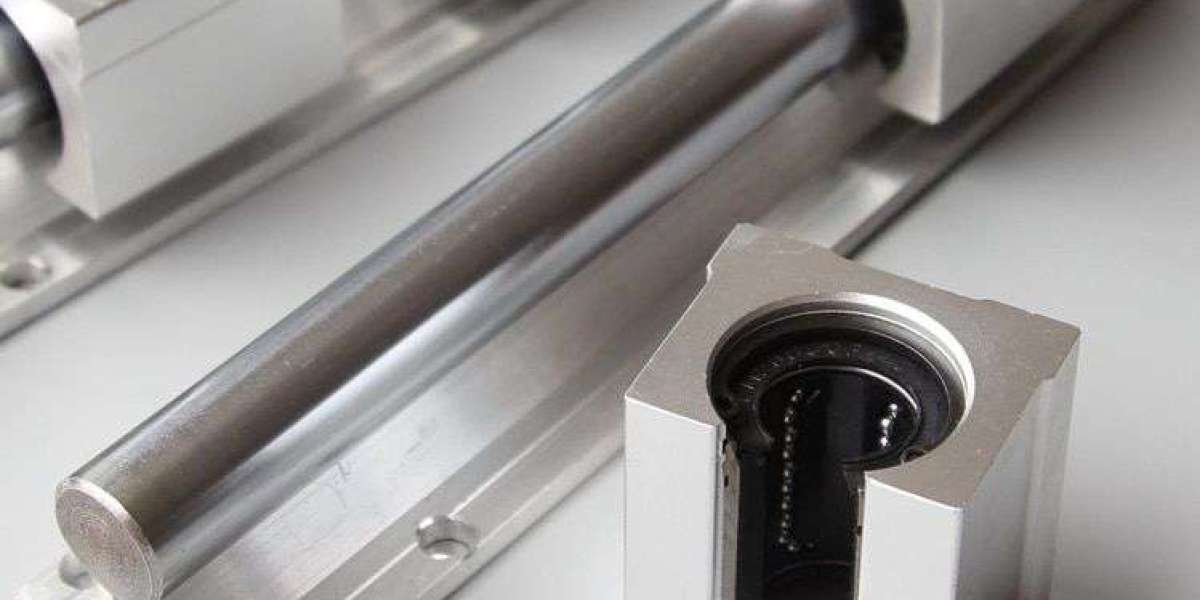Understanding Linear Guide Rails: Core Concepts
What Are Linear Guide Rails?
Linear guide rails are precision-engineered systems that facilitate smooth, controlled linear motion along a fixed axis. Unlike traditional sliding systems that rely on direct metal-to-metal contact (creating high friction and wear), linear guide rails use rolling elements to convert sliding friction into rolling friction - significantly reducing resistance and enabling smoother, faster, and more precise motion.
The core components of a linear guide rail system include:
- 1.
Profiled Rail (Guide Rail): The stationary component featuring precisely machined raceways
- 2.
Carriage (Slider/Block): The moving component containing recirculating rolling elements
- 3.
Rolling Elements: Typically steel balls or rollers
- 4.
Recirculation System: Internal channels that allow continuous rolling element movement
- 5.
Preload Mechanism: Adjusts clearance for optimal performance
Key Advantages Over Alternative Systems
Linear guide rails offer several advantages that make them superior to other linear motion solutions:
- •
Higher Load Capacity: Can support significantly heavier loads than ball screws or belt systems
- •
Greater Precision: Achieve micron-level accuracy with proper preload
- •
Improved Rigidity: Resists deflection under heavy forces
- •
Longer Service Life: Reduced friction means less wear and longer maintenance intervals
- •
Versatility: Available in configurations for virtually any application
Types of Linear Guide Rails
Linear guide rails are categorized based on their design, rolling elements, and application-specific requirements:
1. Ball Guide Rails (Most Common)
- •
Rolling Elements: Steel balls
- •
Best For: General industrial applications, CNC machines, 3D printers
- •
Advantages: Balanced performance, cost-effective, wide availability
- •
Load Capacity: Medium to high (up to 100,000 N per rail)
2. Roller Guide Rails (High Load Capacity)
- •
Rolling Elements: Cylindrical rollers
- •
Best For: Heavy-duty applications, industrial presses, large CNC routers
- •
Advantages: Superior load capacity and rigidity
- •
Load Capacity: Very high (up to 200,000 N per rail)
3. Miniature Linear Guide Rails
- •
Best For: Medical devices, precision instruments, electronics assembly
- •
Advantages: Compact size, high precision in confined spaces
- •
Load Capacity: Low to medium (up to 1,000 N)
4. Crossed Roller Guide Rails (Ultra-High Precision)
- •
Rolling Elements: Alternating rollers at 90° angles
- •
Best For: Semiconductor manufacturing, optical alignment, metrology
- •
Advantages: Zero play, exceptional accuracy
- •
Load Capacity: Medium (up to 15,000 N)
5. Preloaded Linear Guide Rails
- •
Best For: High-precision applications requiring zero backlash
- •
Advantages: Enhanced rigidity, improved positioning accuracy
- •
Implementation: Internal preload mechanisms (springs, shims)
Key Components and Working Principles
1. The Profiled Rail (Guide Rail)
The stationary rail is precision-machined with one or more raceways that guide the rolling elements. Critical characteristics include:
- •
Rail Profile: Square or rectangular designs with multiple raceways for load distribution
- •
Material: High-carbon chromium steel (standard) or stainless steel (corrosive environments)
- •
Surface Finish: Precision-ground or honed for optimal rolling contact
2. The Carriage (Slider)
The moving component attaches to the load and contains the rolling elements. Key features:
- •
Rolling Element Configuration: Balls or rollers arranged for optimal load distribution
- •
Recirculation System: Internal channels for continuous rolling element movement
- •
Preload System: Adjusts internal clearance for performance requirements
3. Rolling Elements and Lubrication
- •
Rolling Elements: Steel balls (most common) or cylindrical rollers
- •
Recirculation: Internal pathways allow continuous motion without external return mechanisms
- •
Lubrication: Essential for performance - grease (standard) or oil (high-speed applications)








